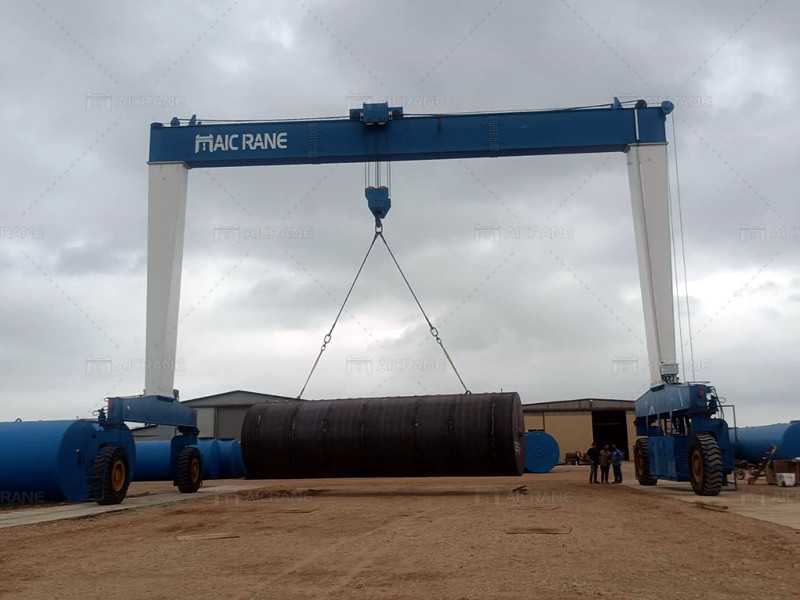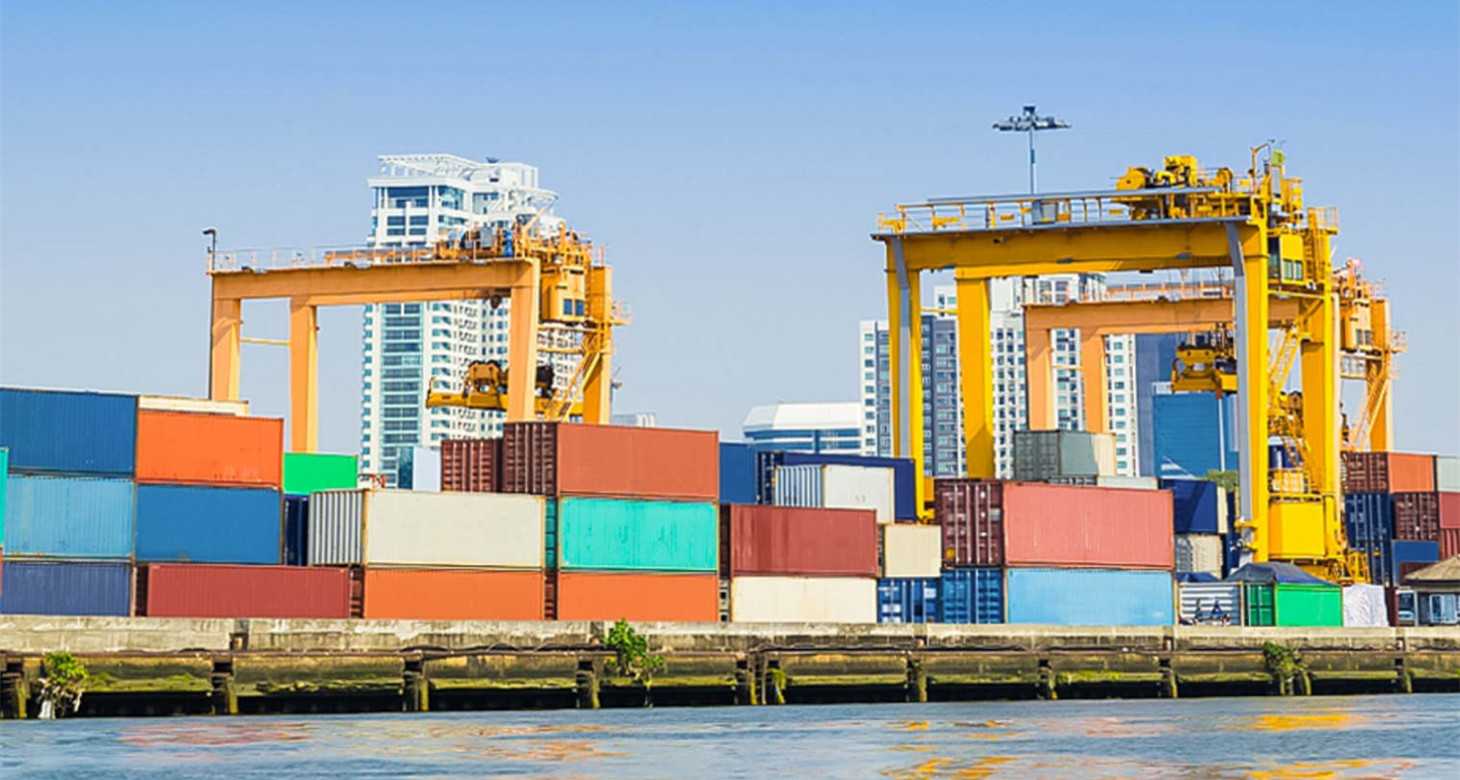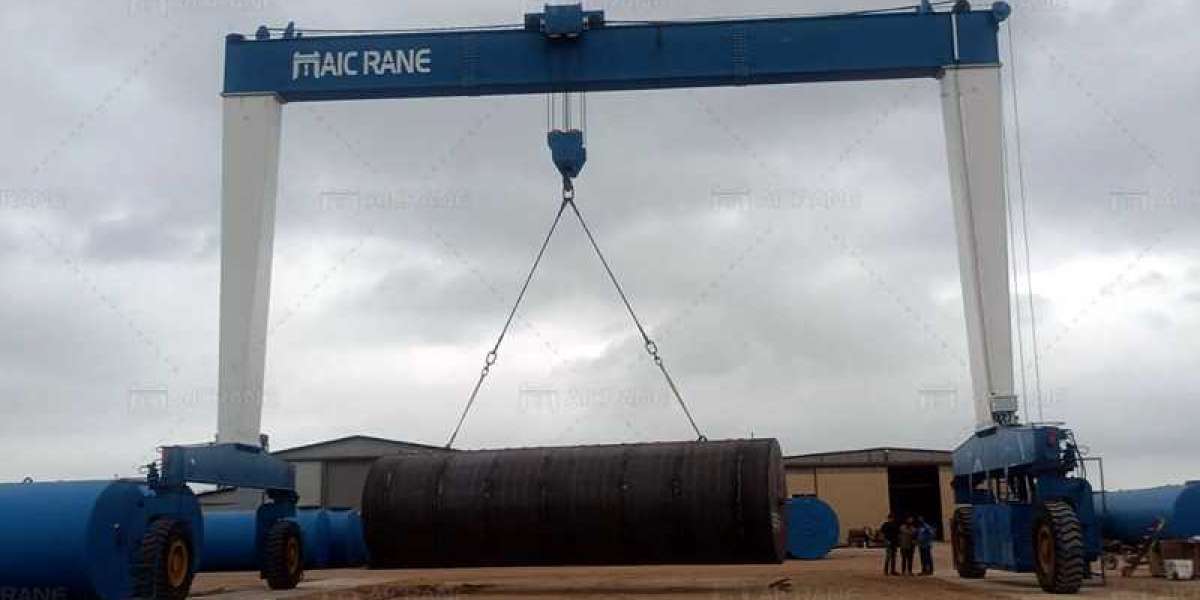Operating an RTG (Rubber Tyred Gantry) container crane is a complex task requiring precision, awareness, and adherence to safety protocols. These cranes are crucial for container handling at ports and container yards, offering mobility and flexibility due to their rubber tires. Below is a comprehensive guide to safely operating an RTG container crane.

Pre-Operation Preparations
Before operating the RTG container crane, conduct a thorough inspection to ensure all systems are functional:
Visual Inspection: Check the crane's structural components, tires, and gantry for visible signs of wear, cracks, or damage.
Hydraulic and Electrical Systems: Verify fluid levels and test electrical systems, including lights, alarms, and control panels.
Load Handling Equipment: Inspect the spreader for proper functioning and ensure it can securely lock onto containers.
Safety Devices: Confirm that emergency stop systems, anti-collision sensors, and alarms are operational.
Operator Training and Certification
Operators must be well-trained and certified to handle RTG cranes. Training should cover:
Crane controls and operation sequences.
Emergency procedures and troubleshooting.
Understanding of load limits and stability factors.
Safe Start-Up Procedures
To begin operation:
Start the crane in a designated safe zone, away from other equipment or personnel.
Perform a system check via the onboard control panel or remote control system.
Communicate with the yard management team to align on container movement schedules.
Load Handling and Stability
Weight Limits: Always ensure the load does not exceed the crane's maximum capacity.
Centering the Load: Position the spreader directly over the container to lift it vertically and prevent swinging.
Stability: Engage stabilizing systems when lifting or lowering heavy loads, particularly in windy conditions.
Efficient Navigation
Route Planning: Follow designated paths to minimize collisions or disruptions in container yards.
Speed Control: Operate the crane at controlled speeds to avoid tipping or accidents.
Obstacle Awareness: Continuously monitor surroundings, using sensors and cameras if available.
Using Advanced Safety Features
Modern RTG cranes are equipped with safety-enhancing technologies:
Anti-Sway Systems: Reduce container movement during travel.
Collision Avoidance Sensors: Detect and prevent potential crashes with other equipment or containers.
Automation Features: Some RTG cranes offer semi-automated or fully automated operations, reducing human error.
Communication and Coordination
Maintain constant communication with the ground team using radios or signaling devices.
Use standardized hand signals if audio communication fails.
Coordinate closely with logistics managers to ensure proper container placement and stacking.
Emergency Handling
Operators must be prepared to respond to emergencies:
Use the emergency stop button to halt the crane in case of a malfunction.
Follow evacuation protocols if there is a fire, hydraulic leak, or other hazard.
Report incidents immediately to supervisors and maintenance teams.
Post-Operation Procedures
After completing tasks:
Park the crane in a designated area.
Shut down all systems and remove the key or deactivate the control panel to prevent unauthorized use.
Conduct a post-operation inspection to identify any wear or issues that need addressing.
Regular Maintenance and Inspection
Daily Checks: Inspect tires, spreader locks, and fluid levels.
Weekly Maintenance: Test the performance of hydraulic systems and clean components prone to wear and tear.
Periodic Servicing: Schedule professional maintenance to address long-term issues and ensure the crane complies with safety regulations.
Some of the manufacturers like Aicrane can provide this kind of services.
Adherence to Safety Standards
Operators should be familiar with international and local safety standards, such as:
ISO standards for crane operation.
Guidelines from port authorities or logistics associations.
Environmental Considerations
RTG cranes often operate in outdoor environments where weather and ground conditions can pose risks:
Avoid operating in extreme wind or heavy rain to maintain stability and safety.
Use eco-friendly practices if operating hybrid or electric RTG cranes, minimizing emissions and energy consumption.
Continuous Operator Development
Encourage operators to undergo regular training and skill updates to stay abreast of advancements in crane technology and operational techniques.
By following these guidelines, RTG container crane operations can be carried out safely and efficiently, reducing risks while enhancing productivity in container handling tasks.







